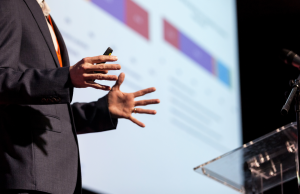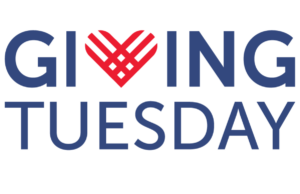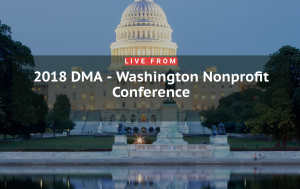Wounded Warrior Project codified its video game fundraising activities in 2018, as well as general video fundraising content, under the moniker Stream to Serve. Since then, the Jacksonville, Fla.-based nonprofit has raised more than $1 million through some 1,700 campaigns via livestreaming and digital funding platforms such as Tiltify.
“We have had the privilege of being chosen [as a beneficiary] by some esports teams, as well as other groups across the United States,” said Wounded Warrior Project (WWP) Vice President of Business Development Brea Kratzert Todd.
WWP’s use of livestream games goes beyond fundraising. The organization coordinates gaming sessions that provide connections for wounded veterans transitioning back to civilian life, or for helping them become comfortable accessing aid programs for either physical ailments, mental health concerns or post-traumatic stress disorder.
“We have program teammates who speak to warriors through these events and talk about our other programs,” Kratzert Todd said.
This outreach, which is accomplished through shared games players participate in remotely, was especially valuable during the shelter in space lockdowns at the height of the coronavirus pandemic.
“Some were in isolation that they hadn’t experienced before, and some warriors are in a community where it may be challenging for them to get to an in-person program,” she said. By setting up initial links, whether with other warriors or individuals within the support community, the games help introduce wounded warriors to the organization’s resources.
Stream to Serve fundraising efforts are separate from the warrior connection activities, which are solely focused on building the warrior community. WWP offers a downloadable streaming guide, which coaches potential fundraisers in a decentralized environment regarding streaming and fundraising best practices. Fundraisers are often not warriors. They are individuals or groups with a passion for the organization’s mission, but might require a knowledge boost to match the passion.
“We take coaching very seriously,” Kratzert Todd said. “We know that time, talent and treasure are the three most precious commodities someone can give us. Making sure we’re helping them capitalize and acknowledging the fact that they’re going live for us is extremely important.”
The social good video game community as a whole puts a high value on coaching and mentoring. Nonprofit executives, video game developers, social innovators, representatives from video game publishers and academics gathered in New York City to talk about some of the most important games of the year.
Most gamers — even the most dedicated players — might never hear about the games discussed at the recent 2022 Games for Change Festival. The four-day event, a mixture of in-person and online sessions, offered views on how games and gaming might affect social good, such as by presenting diversity, equity, and inclusion concerns, raising empathy levels, combatting online bullying, toxicity and extremism, and highlighting a variety of social issues through gameplay.
“Games are a really great medium to raise awareness around causes people might not have been aware of before,” said Games for Change Marketing and Communications Director Cassie Baralis. “With their immersive [aspects] and virtual reality, they have opened a door for how they can be used for social impact.”
Games can do more than shape opinions. New York City-based Games for Change’s activities have a strong educational component. The organization’s Student Challenge brings a mix of social impact information, game design training and professional development tools for teachers to middle and high schools. During the 2021-2022 challenge, students designed nearly 4,000 games that highlighted the issues people with physical or mental differences face, introduced voter registration and voting access challenges or allowed players to navigate environment and climate concerns.
The topics student games address are guided by nonprofits that work with Games for Change. “These students understand these causes on a deeper level than just ‘this is a thing that is happening,’” Baralis said. “They have to do their research, and then we connect students with organizations and nonprofits so they can talk a bit more about what they’re doing.”
Each Games for Change activity draws from others within the organization. The student-focused activities and general festival, for instance, are influenced by the organization’s Raising Good Gamers initiative, which urges children to take an active role in preventing bullying and other forms of online abuse.
“Raising Good Gamers is teaching the next generation of game developers, gamers and people who are just interested in games how we can catalyze positive change in the culture,” Baralis said.
For some nonprofits, generating positive actions starts in their own backyards. Direct Relief in Santa Barbara, Calif., spells out in a downloadable gaming toolkit expectations for fundraisers’ conduct while livestreaming. Gamers have abided by this code of conduct since 2011, when the organization benefitted from its first online video game fundraiser. The restrictions haven’t damped fundraising: during the intervening decade-plus, the organization has raised north of $16.5 million.
Starting in 2016, Direct Relief operates a formal program with dedicated employees focused on gaming. The toolkit, which is constantly revised, goes beyond the code of conduct and now offers a wide range of multimedia support for fundraisers.
Despite the humanitarian bent of its mission, Direct Relief’s leadership does not place restrictions on the types of games fundraisers may use. “From our perspective, the content is owned by whoever is putting it on,” Director of Digital Philanthropy Drew Schroeder said. “As long as it’s nothing crazy, such as pornographic or whatever that game rating above M is.”
Direct Relief has not had to deal with such issues. That said, Schroeder believes community engagement is a key for successful video game fundraising. “You have to deal with the scope of YouTube and Twitch [an online streaming service which earlier this year boosted its fundraising abilities when it launched Twitch Charity] and Facebook and all the creators that are in the space, and be able to actively engage with all of them,” Schroeder continued. “You can’t just have someone who has been pulled in from their job say ‘Let’s make a Twitch account and chat, cheering [gamers] on. It’s not going to be that simple.”
Whoever is engaging with these communities also must realize fundraising via video stream gaming is a unique animal. “Traditional fundraising methods don’t apply to the digital space,” said Schroeder, who himself has fundraised through livestreaming video games. “People are going to do things that are very specifically honed in to their communities. We’re talking about people who are going to take pies in the face. I’ve learned to play games blindfolded.”
Those sorts of actions are challenge-based initiatives rewarded with donations when successfully completed for viewers’ pleasure. But in some cases the pleasure of watching play, at whatever level, is reward enough. This was the case when video game development firm Undead Labs, Seattle, teamed up with the American Red Cross for Bleed to Lead, a watch-and-donate event. Game designer Geoffrey Card led a small group through his company’s State of Decay 2, a zombie shoot-‘em-up, via the Twitch platform.
Viewers received a commemorative tee shirt for a small donation. A slightly larger donation compelled participants to narrate their actions in faux British accents, or sing their narration. For a reach goal of $11,500, Card offered to change his hairstyle from a conservative cut to a neon pink mohawk.
The effort pulled in more than $14,400.
As part of the promotion, Undead Labs’ designers created a special vehicle — a blood splattered bloodmobile — players could use. Senior Artist Dan Mod created several iterations of the vehicle, with Red Cross representatives requesting only one modification, that a blood-covered windshield be wiped clean, so the it would not present a driving hazard while driving through a zombie-infested apocalypse.
“Across much of our organization, we have recognized a need to connect with younger generations who want to actively engage in philanthropic giving, volunteering with us, or as blood donors, but may not have known the best way to connect,” American Red Cross Director of Consumer Marketing and Fundraising Nathan Groce wrote in an email to The NonProfit Times.
“With over 80% of Millennials and Gen Z actively playing video games and creating gaming communities, it was clear that connecting with these generations where they are could be an effective strategy for our organization,” Groce continued. “Through our newer work with video game fundraising, we find that running a successful video game fundraiser is less about the particular game and more about finding a community centered on one topic. For many nonprofits, live streaming is the new telethon but in digital form.”












